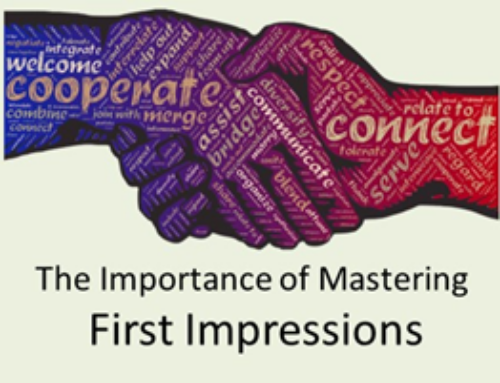There’s a category of thought leader that has long been overlooked, but the data now suggests companies can no longer afford to do so—that category is the Non-MD category of Nurse Practitioners (NP) and Physician Assistants (PA).
From our contacts in continuing medical education (CME), we’ve heard there has been a marked increase in the demand for specialization among nurses, which aligns with and explains the concomitant rise of and demand for NPs and Doctorates of Nursing Practice (DNP).
The shifting healthcare landscape—more specifically, the shifting health insurance landscape—has formed a space for highly trained medical personnel like Nurse Practitioners and Physician Assistants to serve the community, in a capacity that was originally filled by a general practitioner (GP)/Primary Care Physician (PCP), while keeping costs down and making services and practices economically viable in the current climate. This trend dovetails with the continued balkanization of medicine into evermore specialties. Into the gap left by dwindling GPs steps the Nurse Practitioners and Physician Assistants, and this kind of everyday contact with patients can prove valuable to pharmaceutical companies. NPs and PAs are in many ways the new front line.
Couple this trend of an increased role in treatment for the nursing profession, with the educational demands of nurses in increasingly specialized practices and disciplines, and we come full circle to the growing demand for specialized certifications, such as the OCN for oncology, and the concomitant growing pool of potential thought leaders, who see these patients and teach these classes.
Much like Pharmacists prove valuable in Phase 1 toxicity trials, and then again in late-stage development, because of their interaction with patients and their medication, NPs and PAs offer a unique perspective from where clinical meets commercial endeavors.
A look at the data from recent surveys by Arx Research bears these musings out. Analyzing the data outside traditional avenues of thinking shows that NPs and PAs play a valuable role already, though we content that they can do more for the smart life-science organizations.
Comparing Figure 1 and Figure 2 shows quite clearly the trend being described here. Figure 1 comes from a US MSL study conducted in 2014; Figure 2 is data collected during a similar study in 2018. The use of NPs and PAs increases a significant 12%, from 2% to 14%.
This shift coincides with a trend away from Academic thought leaders, as their percentage decreased from 35% to 19% in those four years. Putting that in perspective, NPs and PAs now constitute only 5% less of the average thought-leader stable than the Academic category that used to be one of, if not the, go-to category for life-science organizations looking to work with the medical community on a product.
Figure 1: Typical Mix of KOL Categories Targeted by MSLs (2014)
Figure 2: Typical Mix of KOL Categories Targeted by MSLs (2018)
Similarly, NPs and PAs now make up the same percentage of a given company’s thought-leaders as do Subspecialists. The fact that both Specialists (28% to 37%) and Non-MD categories both increased, while Generalist (PCP) remained at 3%, also speaks to this trend. Both the lack of GPs and the lack of PCPs meeting with patients have clearly deemphasized that category as a target in favor of the Non-MD category.
Thinking about this data by phase reveals that Non-MD categories keep apace if not surpass more traditional thought leader categories—like PCPs, Subspecialists and, even the more novel Pharmacist—in launch and post-launch phases. Figure 3 and Figure 4 show a breakdown for targeted thought leaders for launch, and post-launch, respectively, in the US. This data comes from a KOL-use by phase study conducted in 2017.
Figure 3: Targeted Thought Leaders: Launch
In Figure 3, for launch, we see that Nurse Practitioners and Physician Assistants constitute 9% of targets, while Subspecialists make up 8%, and PCPs and Pharmacists each represent 12% of targets. Meanwhile, Academic thought leaders make up 16% and Specialists 21%, showing that companies are managing diverse thought-leader relationships and activities at this stage in the product’s lifecycle.
By the time products reach post-launch (Figure 4), NPs and PAs (13%) now outpace PCPs (9%), Subspecialists (7%), and are even with Academic (13%) and Pharmacists (14%).
Figure 4: Targeted Thought Leaders: Post-Launch
We have previously pointed out the rising importance of Pharmacists in Phases 1, launch and post-launch of a given product’s lifecycle and to life-science companies’ thought leader makeup. The same can now be said of NPs and PAs, and for many of the same reasons: they have significant contact with patients; they are expected to know and practice pharmacological management in a wide variety of settings; each of the previous two is done in a more commercial arena than many of the Specialists and Academic researchers that prove so valuable in earlier phases.
Finally, as Figure 5 illustrates, Nurse Practitioners and Physician Assistants have the best accessibility. Figure 5 gives the rated degree of difficulty each thought-leader category poses companies trying to contact and work with them. Non-MD providers were rated the least difficult, at 2.13 out of 5, while PCPs, who often are performing the same exact tasks, were rated a 2.67. In a climate with multiple firewalls erected or going up between pharmaceutical companies and medical professionals, the relatively low barrier to medical practitioners who have their ears to and boots on the ground, so to speak, could prove invaluable.
Figure 5: Level of Resistance to Access Thought Leaders
This final data point shows a strategic move on the part of pharmaceutical companies, yet it should not be thought of as solely a response to compliance legislation. The rising use of NPs and PAs is a complete strategic move, for these categories represent new fields of possibility for useful and productive work, but without the same baggage and high honorarium that can come when working with the more traditional categories.
Nurse Practitioners are trained differently than many other thought leader categories: they embrace theories that stress collaboration and they work more closely with patients, making them a great touchstone for feedback on drug effects and drawbacks, and best ways to respond to patients’ questions and complaints. In today’s healthcare landscape and information-driven world, these skillsets add yet another value to NPs and PAs working as thought leaders, making them a great asset in the commercial phases.
Jordan Stone, PhD and Arx Research Team
Data from this article were gathered from the following studies, available here:
US Medical Science Liaisons: Era of Refinement
Thought Leader Utilization: Refining Strategies and Tactics for Optimal Engagement











